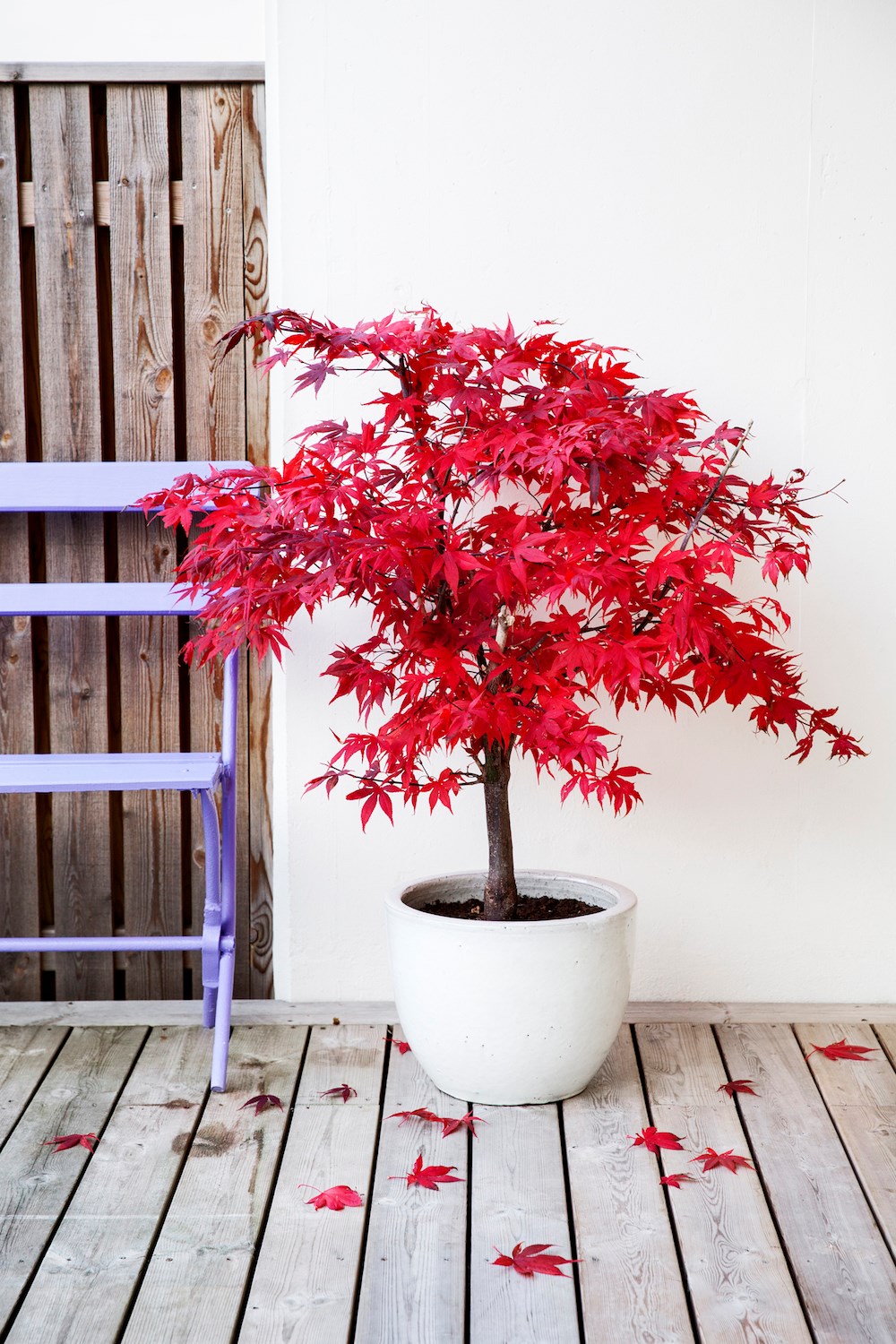Where can you grow Japanese maple?
The good news is, the maple will grow pretty much anywhere in Australia as long as you know how to take care of it.
If you're in Victoria, Tasmania, New South Wales or South Australia Nishiki Nursery, who specialise in grafted Japanese Maples, will help you source a local supplier who can find you the right Japanese Maple tree to suit your garden.
Brindabella Gardens in Queensland has a gorgeous display and are more than happy to share their grafting and cultivating advice.
When to plant a Japanese maple
According to Eco Organic you can plant Japanese maple at any time of year but being deciduous it will shed its leaves in winter. Buying a maple in Autumn allows you to see the colourful leaves in full glory.
Growing your Japanese maple
The compact root system of the Japanese maple makes it perfect for inner city courtyards as the roots won't interfere with your home's foundation. It also makes them perfect for growing in pots.
Just beware that each maple will reach a different height. One of the mid-range varieties is Seiryu which can grow up to 4 metres.
Japanese maple bonsai
The Bonsai Society of Australia recommends pruning your Japanese maple in June once the leaves have fallen (which happens around May to mid-July).
In hotter parts of the country, Japanese maples will grow best in part shade. In cooler climates like Tasmania the maple prefers a position with good light.
Caring for your Japanese maple
The explosion of Autumn colour is what makes the Japanese maple so popular. Whether that's a bonsai or a full size Acer palmatum, they will reach their full potential if kept out of the frost and wind.
Dwarf weeping maple
Raraflora on the south coast of NSW grafts a variety of rare plants including the laceleaf and dissectum varieties of Japanese maple.
Specialsing in the weeping maple, they deliver Australia wide and prices start at $75 for a 2-4 year old tree.
Osakasuki
As you can see from the picture below, the leaves of the Osakasuki have a vibrant colour and can be pink through to magenta, right through to deepest red.
The colour is dependent on the conditions and climate with cooler climes producing the most vibrant shades.
Bloodgood maple
Bloodgood (above) is a cultivated form of Atropurpureum.
Like most Japanese maples, the Bloodgood is a slow growing tree sprouting 30 to 60 centimetres each year.
It will grow to full height 3-4 metres in about 15 years but can also be cultivated into a dwarf version known as Shaina.
Coral bark maple
Like most Japanese Maples, the Sango Kaku, also known as Coral Bark, grows readily alongside other maples and shrubs.
The Coral Bark grows to a height of 6-7 metres with a beautiful spread that ranges from 5-6 metres wide.
Spectacular colours
Planting Japanese maples next to trees and shrubs with blue, green or purple foliage provides a technicolour vibe that will bring your garden to life.
Red dragon maple
The Red Dragon maple which originated in New Zealand has rich purple-red lacy leaves.
The dwarf Red Dragon grows to around 60 centimetres whereas the full size version can reach almost 2 metres.
You may also like:









